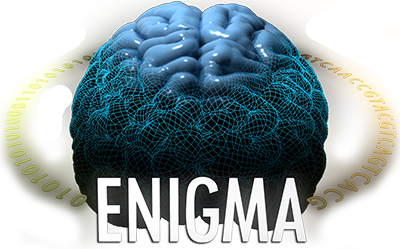ENIGMA Lysosomal Storage Diseases
ENIGMA SD was established in order to define relations between genetics, brain morphometry, cognitive status and clinical signs in lysosomal storage diseases.
Lysosomal storage diseases are so-called orphan diseases, and ENIGMA ideology with consolidation of data from various centers is ideal for them. Through this project world science can get previously unknown facts on brain involvement in storage disease. The results of the multicenter research are planned to be published in credible scientific journal.
The steps of the main multicenter research: step 1 – uniform protocol with implementation of ENIGMA tools, step 2 – transmission and gathering of the massive amount of data from various centers, step 3 – analysis of the major data.
The main aims and goals:
- To get previously unknown data on microanatomical and clinical brain changes in those storage diseases, which are not usually associated with nervous system involvement – for example, Gaucher’s disease type 1, hepatic forms of glycogen storage disease etc.
- Detection of previously unknown mechanisms of brain damage and dysfunction in diseases associated with nervous system involvement, but having many unclear and unsettled questions – for example, mucopolysaccharidosis, Gaucher’s disease type 3 etc.
- Connection of genetics with various brain and clinical phenotypes.
- New data on storage diseases in general, not only in the field of nervous system, associated with receiving of large sample of rare diseases.
What is the difference between ENIGMA SD and other ENIGMA projects? ENIGMA SD covers not one, but many nosologies, thereafter one project could have various aims, protocols, analyses. Furthermore, the amount of participants is critical, and that is why some nosologies can be not included into the project, if there are no ways to gather data from at least 20-30 participants.
Our Storage Disease Enigma Group Structure:
Leyla Namazova-Baranova, President of the European Paediatric Association, Deputy Director for science of the Scientific-Practical Center of Children’s Health (Russia, Moscow) - supervisor or group-leader
George Karkashadze - head of neuroscience
Nato Vashakmadze - head of rare diseases pediatric organization
Anastasia Rykunova - scientific support and external relations manager
How to be included into the research: for all matters you can contact George Karkashadze (karkga@mail.ru).
Diseases included into the ENIGMA SD at present moment:
- Gaucher’s diseases, types 1,
- Glycogene storage disease, hepatic forms (types 1,3,4,6,9) .
- Mucopolysaccharidosis, types 1, 2,3,6.
- Wilson disease, hepatic form.
- The possibilities for including of other diseases are open – as soon as we understand, that we are able to have sufficient amount of participants. It depends on all and each of us.
We invite all the Centers, which have information on storage diseases, to participate in the research. The main conditions: 1) You have sufficient group of patients with one of the storage diseases, 2) There are performed genetic investigations and brain MRI of those patients. If you meet these criteria, you can contact us for additional consultations
Currents status of ENIGMA SD:
- Development of protocols for the main multicenter research.
- Process of including of various centers into the research is open.
- Preparation for publication of the results of the pilot study
Past events of the ENIGMA SD:
ENIGMA Russia International Brain Workshop: Neuroscience in Pediatrics. Working Group on Lysosomal storage diseases: Results of the pilot study " Storage diseases in children: genetics, cortical morphometry, clinical manifestations."
ENIGMA on social media:

